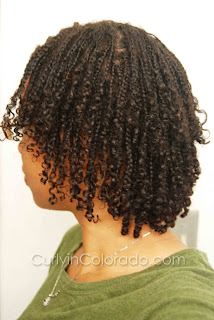After my most recent bout with heat damage, I wasn’t too sure how to go about getting my curls back. I wore my hair straight for Easter Sunday but decided to use the flat iron again later in the week after using oils in my hair. My curls did not revert back like they normally did when I wore my hair straight and I was afraid that the damage was permanent. Was I upset? You damn skippy I was! I couldn’t believe that I let this happen again. Not only that, I just chopped off 1/2″ of damage at the start of the year which gave me curls galore. Now I was right back where I started and worse.
After watching that, I went to the hair forums and read articles for more info on how the protein treatment worked. Basically, heat can cause significant damage to the cuticle layer of the hair strand. This is the protective outer layer (imagine tiny shingles that overlap one another). Once these cuticles are damaged, the hair is vulnerable and more prone to dryness and breakage. The protein in the Aphogee treatment helps to fill in the gaps where the hair strand is missing these important little pieces.
 So, the very next day, I shot over to Sally’s and made a B-line for the Aphogee products. I still wasn’t too sure if this was all I needed so I grabbed a silicone based conditioner (the GVP version of Paul Mitchell’s The Detangler) and said a prayer. After the application and rinsing it all out, I was very surprised to see curls where there was once very non-descript strands. The treatment actually worked, but the curls were still looser than before (as you can see from the photo). My hair was still much thicker at the roots. Afterwards, I decided to go back to an old regimen I employed when I used to use semi-permanent color on my natural hair.
So, the very next day, I shot over to Sally’s and made a B-line for the Aphogee products. I still wasn’t too sure if this was all I needed so I grabbed a silicone based conditioner (the GVP version of Paul Mitchell’s The Detangler) and said a prayer. After the application and rinsing it all out, I was very surprised to see curls where there was once very non-descript strands. The treatment actually worked, but the curls were still looser than before (as you can see from the photo). My hair was still much thicker at the roots. Afterwards, I decided to go back to an old regimen I employed when I used to use semi-permanent color on my natural hair. - Deep condition 2x per week- 1x with moisture; 1x with protein
- Stay away from heat…lol
- Protective styles to avoid further damage
- Silicone based conditioner for detangling and co-washing
 |
| My curls 4 weeks after the treatment. Using braids to protect hair from too much manipulation |
